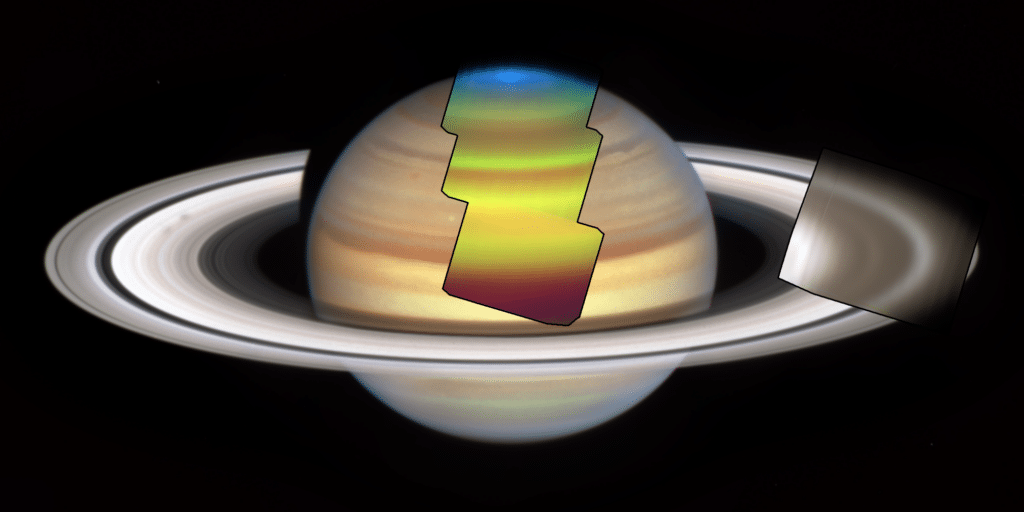Saturn’s late northern summer is on a cooling trend, marking a reverse in the massive planet’s atmospheric circulation patterns, according to a team of planetary scientists from the University of Leicester. This discovery comes through new observations from the James Webb Space Telescope (JWST), revealing a last glimpse of Saturn’s warm, gas-filled north pole before it descends into the darkness of polar winter.
The Seasons on Saturn and Earth
Like Earth, Saturn experiences seasonal changes due to its axial tilt, but unlike Earth’s yearly orbit around the Sun, Saturn takes a staggering 30 years to complete one orbit. This means that each season on Saturn lasts for about 7.5 Earth years. As the Earth is heading for its northern autumn equinox this September, Saturn’s northern autumn equinox is not due until 2025, ushering in extended periods of polar winter on both planets.
To gather these groundbreaking findings, the Leicester team used an instrument called the MIRI on the JWST to study Saturn’s atmosphere in infrared light. Infrared light is invisible to the human eye but is extremely useful for observing temperature variations and the presence of various gases in the atmosphere. MIRI divides this infrared light into its component wavelengths, allowing scientists to identify specific chemicals in Saturn’s atmosphere.
“The quality of the new data from JWST is simply breathtaking – in one short set of observations, we’ve been able to continue the legacy of the Cassini mission into a completely new Saturnian season, watching how the weather patterns and atmospheric circulation respond to the changing sunlight,” says Leigh Fletcher, a professor from the University of Leicester’s School of Physics and Astronomy, in a statement.
Unprecedented Findings
The observations from November 2022 disclosed new aspects of Saturn’s stratosphere— the layer of the atmosphere that lies above the cloud tops. One key feature is a 1500-km wide warm vortex at the north pole, surrounded by a broader region of warm gases. These warm regions have been sustained by sunlight during Saturn’s lengthy summer. But as the planet heads toward its 2025 northern autumn equinox, these warm areas will begin to cool down.
A particularly surprising revelation was the reverse in Saturn’s atmospheric circulation patterns. The planet’s stratosphere typically has warmer temperatures and an abundance of hydrocarbon gases like ethane and acetylene during winter. However, the latest observations showed cooling temperatures and reduced levels of hydrocarbons, suggesting an upward flow of cooler, hydrocarbon-poor air.
This study was part of a broader initiative to observe all four giant planets in our solar system with the JWST. Saturn was chosen as an early test subject due to its challenging characteristics, such as its size and brightness.
‘Imagine What Discoveries Await’
Dr. Oliver King, a postdoctoral researcher, explains the observational complexity: “MIRI can only see a small area of Saturn at any one time, and we’re at risk of saturating the detectors because the planet is so bright compared to JWST’s usual targets.”
The Saturn program was years in the making, and for Professor Fletcher and his team, the payoff was certainly worth the wait. “We started designing these Saturn observations more than 8 years ago, so when that first data landed in late 2022, it was certainly a career highlight,” said Professor Fletcher.
It seems that the recent observations are just the tip of the iceberg in terms of what the James Webb Space Telescope can achieve. As Professor Fletcher noted, “if we can get so many new findings from a single observation of a single world, imagine what discoveries await?”
The results of this study are published in the journal JGR:Planets.












